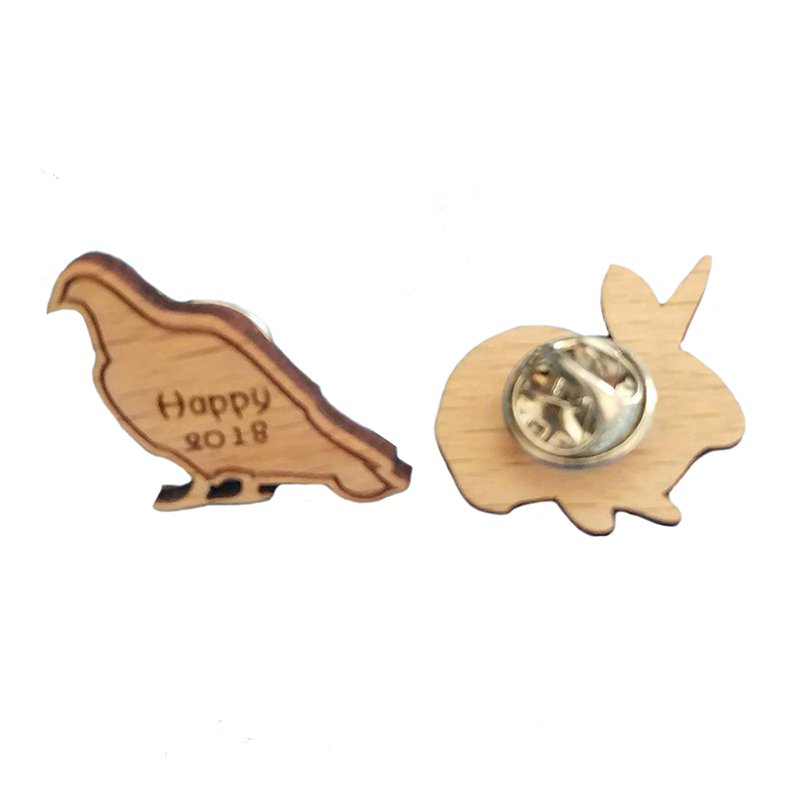Wood pins, also known as dowels, have been a staple in the world of woodworking and DIY projects for centuries. These versatile cylindrical rods are made from hardwoods like oak, maple, and cherry and can be used in a variety of applications, from furniture construction to cabinetry, and beyond. In this comprehensive guide, we will take a closer look at wooden pins, their different uses, and how you can make the most of them in your next project.
Types of Wooden Pins
The type of wooden pin you choose will depend on the specific application you have in mind. Some of the most common types of wooden pins include:
Straight Dowels: These are the most common type of wooden pin and are often used in furniture construction, cabinetry, and wood joinery. They come in a variety of diameters and lengths, making them ideal for a wide range of projects.
Fluted Dowels: Fluted dowels have a series of parallel grooves running along their length, which help to improve grip and provide a better bond between the pin and the surrounding material. These are often used in projects where strength and stability are critical, such as in the construction of outdoor furniture or flooring.
Dowel Pins: Dowel pins are typically shorter than other types of wood pins and are used as fasteners, connecting two pieces of wood or other materials together. They come in a variety of diameters and lengths, and their small size makes them ideal for precision work.
Decorative Dowels: Decorative dowels are used to add a touch of style to furniture, cabinetry, and other projects. They come in a variety of shapes and designs, including round, square, and even star-shaped, and can be used to enhance the overall appearance of your project.
Uses for Wooden Pins
Wooden pins have a wide range of uses, including:
Furniture Construction: One of the most common uses for wooden pins is in furniture construction. They can be used to join two pieces of wood together, forming a strong and stable bond that will last for years to come.
Cabinetry: Wooden pins are also frequently used in cabinetry, especially in the construction of cabinets, bookcases, and other built-in furniture. They can be used to secure the sides and back of the cabinet to the base, providing additional stability and strength.
Wood Joinery: Wooden pins can also be used for wood joinery, connecting two pieces of wood at a specific angle. This technique is often used in the construction of shelves, desks, and other pieces of furniture.
Decorative Accents: Wooden pins can also be used to add decorative accents to your projects. For example, you can use them to create unique patterns or designs or to add a touch of elegance to your furniture.
Fastening: Finally, wooden pins can be used as fasteners, connecting two pieces of wood or other materials together. Dowel pins are especially useful in this regard, as their small size allows for precise placement and easy installation.
Choosing the Right Wood Pin
When selecting wood pins for your project, there are several key factors to consider:
Material: The type of wood you choose will depend on the specific application you have in mind. Hardwoods like oak, maple, and cherry are ideal for furniture construction and wood joinery, while softwoods like pine and spruce are better suited for cabinetry and decorative accents.
Size: The size of the wooden pin you choose will depend on the thickness of the material you are working with and the specific application you have in mind.
Diameter: The diameter of the pin will determine its strength and stability. For furniture construction and wood joinery, it’s important to choose a diameter that will provide enough strength, while still being small enough to fit the drill bit. For fastening applications, a smaller diameter may be more appropriate.
Length: The length of the pin will depend on the thickness of the material you are working with, as well as the specific application you have in mind. When selecting a length, be sure to allow for enough overlap between the two pieces of wood to ensure a secure connection.
Grain: The grain of the wood is also important to consider. Choose a wooden pin with straight grain, as this will ensure it stays straight and does not warp over time.
Finish: Depending on the project you are working on, you may want to choose a wooden pin with a specific finish. For example, if you are using the pin in a decorative application, you may want to choose one with a decorative design or a smooth, polished finish.
Conclusion
Wooden pins are a versatile and essential tool in any woodworker’s toolkit. From furniture construction to cabinetry and beyond, these cylindrical rods are a reliable and durable option for a variety of applications. By taking the time to choose the right wooden pin for your specific needs, you can ensure that your projects will be strong, stable, and look great for years to come.



